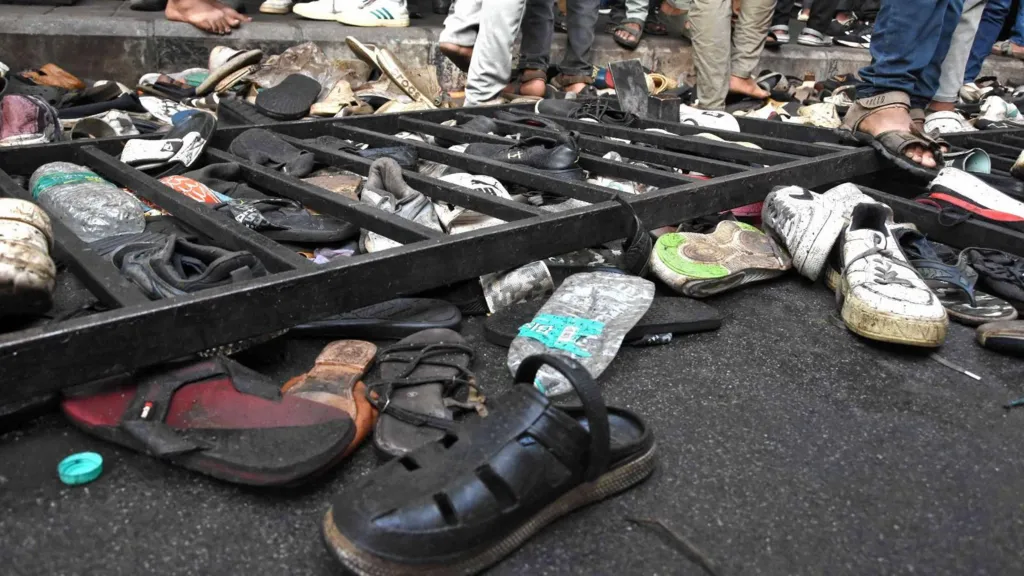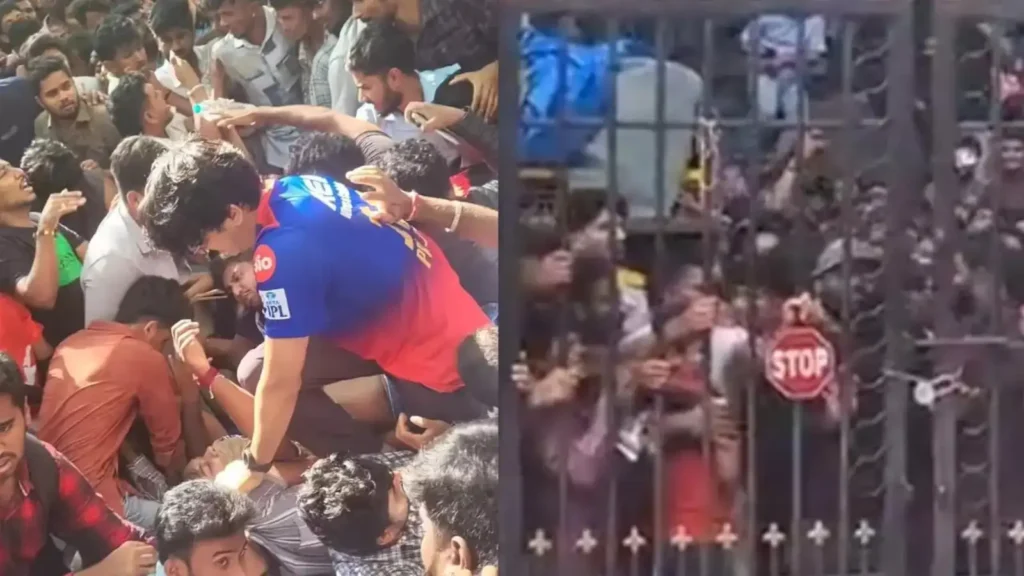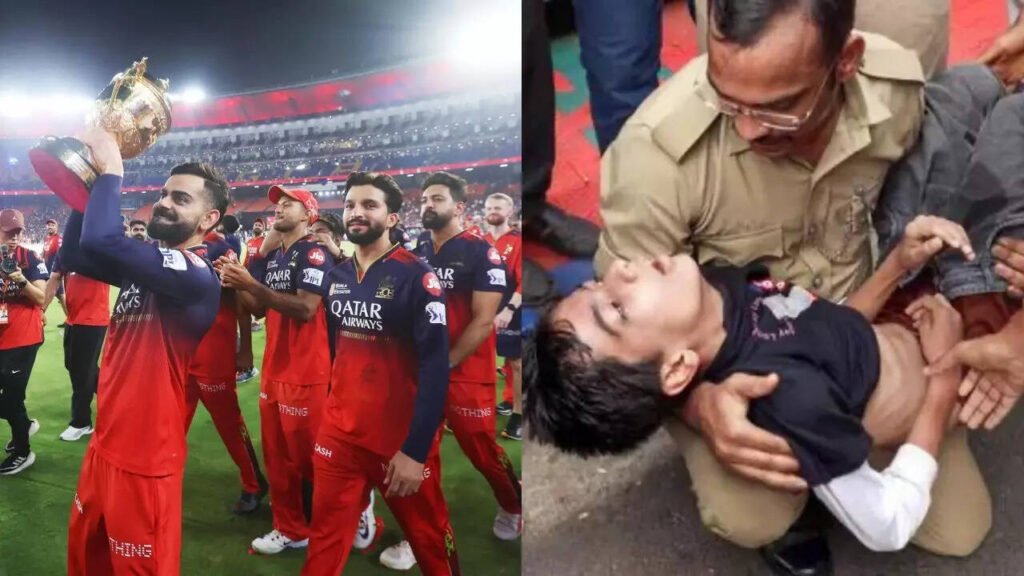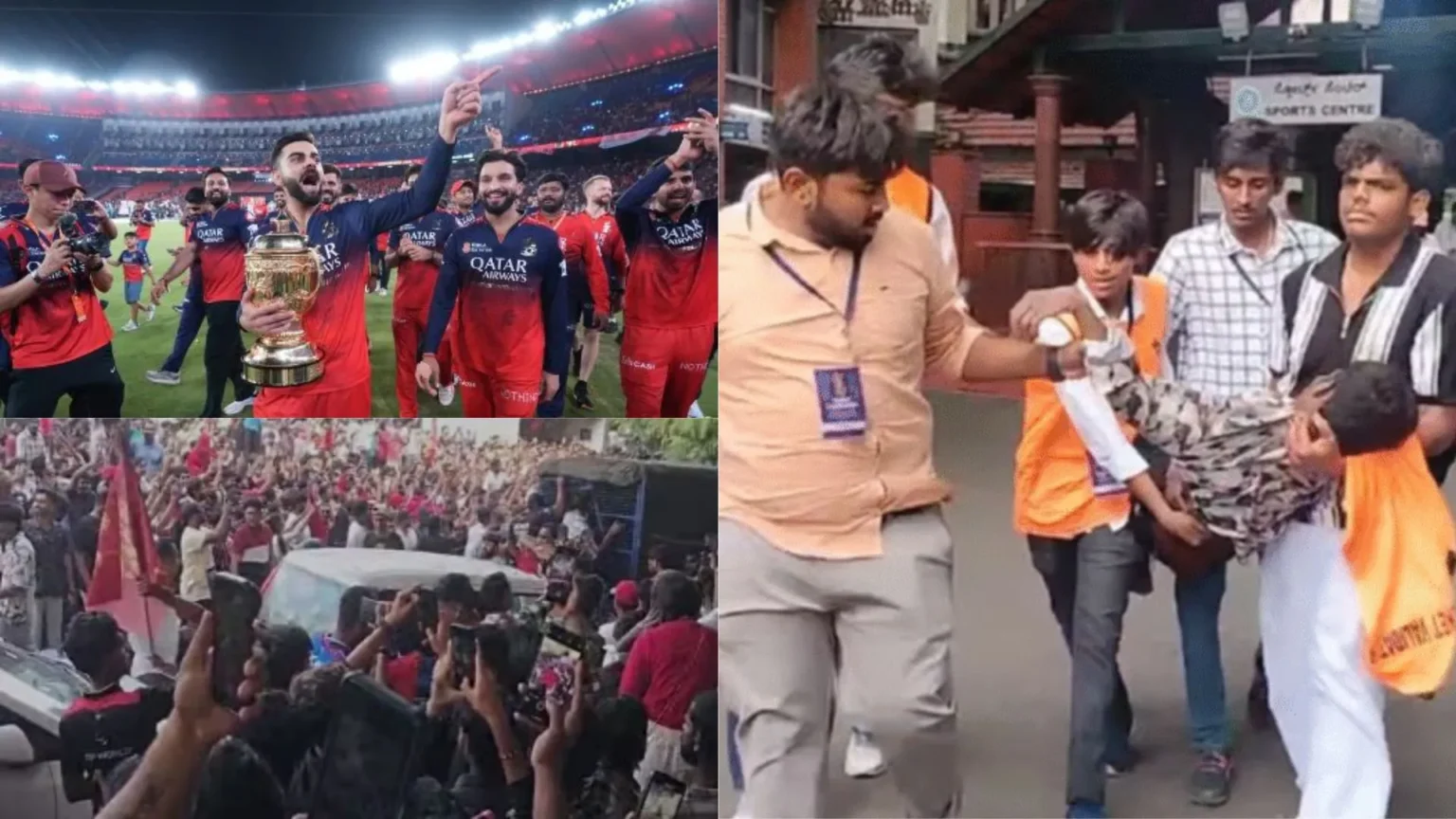RCB Parade Crush: When Joy Turned into Horror
The RCB parade crush in Bengaluru turned a day of celebration into tragedy. On a Wednesday filled with excitement, thousands gathered to honor Royal Challengers Bengaluru’s (RCB) first Indian Premier League (IPL) championship. The city buzzed with energy, but joy quickly gave way to chaos and panic.

Shamili, wearing an RCB jersey with “18 Virat” on the back, joined her sister and friends outside the Chinnaswamy Stadium. Though not a cricket fan, she was swept up in the festive mood. Like many, she expected cheers and celebration—not the horror that followed.
Inside the RCB Parade Crush: What Went Wrong
The festive mood quickly deteriorated as uncontrolled crowds surged toward the stadium. Authorities had anticipated a crowd of 100,000, but estimates now suggest that 200,000 to 300,000 people converged on the narrow streets surrounding the stadium. The massive crowd overwhelmed the venue—designed for just 32,000 people—well before the RCB team appeared.
Videos circulated on social media showed individuals scaling walls, climbing trees, and pushing through barricades in desperation. There was a critical lack of crowd control, medical aid, and organized entry and exit routes. Tragically, the uncontrolled crowd pressure led to the deaths of 11 people and left dozens injured.
RCB Parade Crush Survivors: Stories of Trauma and Shock
Survivors of the RCB victory parade crush in Bengaluru are now struggling with the emotional aftermath. Shamili, now recovering at Bowring and Lady Curzon Hospital, recalled the horror: “I kept saying, ‘let’s go, let’s go’—the crowd was getting out of control.” The next thing I knew, I was on the ground. People were walking over me. I thought I was going to die.”

Another survivor, Haneef Mohammed, an engineering student, said he was near the main gate without a ticket when chaos erupted. “People started running, and the police began hitting us with lathis. “Someone struck me on the head, and I started bleeding,” he said. Although police later helped him get to a hospital, the experience left him shocked and shaken.
RCB Parade Crush Victims: Lives Lost in the Tragedy
The age of the deceased ranged from 13 to 43. Among them was Divyanshi, a Class 9 student who had come with her mother and relatives. Others included college students and a tech professional attending with colleagues. According to medical personnel, many victims suffered from suffocation and trauma injuries. Ambulances struggled to reach the site due to the sheer density of the crowd.
Lack of Preparation and Oversight
Criticism has mounted over the event’s poor planning and lack of safety measures. With no formal passes or regulated crowd control zones, thousands poured into the streets unchecked. A relative of one of the injured victims voiced frustration: “A team celebration should happen in a controlled environment, not amidst uncontrolled crowds.”
Officials within the stadium remained largely unaware of the tragic events unfolding outside. The RCB team had already participated in a formal felicitation at the Vidhana Soudha and proceeded to the stadium for a victory lap, seemingly unaware of the calamity occurring nearby.
Official Response and Enquiry
Karnataka Chief Minister Siddaramaiah announced a magisterial enquiry into the incident. He called the tragedy “a moment of joy turned into sorrow” and vowed accountability. The IPL chairman stated he was unaware of who coordinated the event, and RCB officials claimed they only learned of the disaster through phone calls.
RCB later issued a statement expressing deep anguish and claimed they altered their programme upon receiving updates from the local administration. Star cricketer Virat Kohli wrote on social media, “At a loss for words. Absolutely gutted.”
Police Actions Under Scrutiny

The role of the police has also come under question. Eyewitnesses report that in the absence of proper barriers or communication, officers resorted to using lathis to disperse the crowd, worsening the panic. The use of force in already chaotic conditions likely escalated the situation.
Infrastructure and Crowd Management Failures
Bengaluru’s urban infrastructure struggled under the weight of an unexpected crowd surge. Narrow roads, insufficient public transportation options, and a lack of medical preparedness highlighted the city’s unpreparedness. Experts argue that organizers must coordinate large public events with proper risk assessments, especially in dense urban settings.
The Ripple Effect: Emotional and Social Impact
For many families, what began as a moment to celebrate local pride has ended in mourning. Local hospitals now offer grief counselling and psychological support, but survivors still carry deep emotional scars.
The RCB victory parade crush in Bengaluru has also sparked public anger. Social media is flooded with demands for accountability, and many are questioning why such a large event was conducted without clear protocols or contingency planning.
Moving Forward: Calls for Reform
Civic groups, public safety advocates, and political leaders are calling for structural reforms in how large-scale public celebrations are managed. Suggestions include pre-registration systems, digital pass verification, segmented crowd zones, and enhanced coordination between civic bodies, police, and medical teams.

Experts insist that lessons must be learned to prevent similar tragedies in the future. Celebrations should bring people together in joy—not endanger their lives.
A City in Mourning
The RCB victory parade crush in Bengaluru has left an indelible mark on the city’s collective memory. As families mourn, and survivors attempt to heal, the tragedy serves as a grim reminder of what can go wrong when excitement is not met with adequate planning.
Bengaluru now stands at a crossroads. The city’s spirit is strong, but healing will require not just time—but meaningful change in how public events are managed. Until then, the memory of those lost in a moment meant for joy will haunt the celebrations that should have united a city in triumph.




